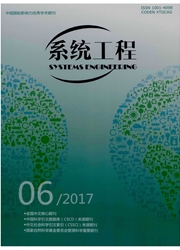

 中文摘要:
中文摘要:
由于企业集团内部成员公司众多且关联关系复杂,如果企业集团不能有效地控制其整体信用风险,或者商业银行无法正确地识别和监管集团客户的授信风险,则企业集团的经营和融资能力都将受到极大的限制。本文基于适合度景观理论(Fitness Landscape Theory,FLT),针对企业集团信用风险的特点,在建立修正NK模型的基础上,嵌入元胞自动机构建了CANK模型,并应用该模型对企业集团信用风险的"适合度景观"进行模拟。研究结果表明:如果固定企业集团内部的关联结构,则存在最优的企业集团规模使得企业集团的违约概率达到最小;在不同规模条件下,关联结构对企业集团信用风险的影响差别较大,当K=5时,企业集团信用风险水平较低;如果企业集团在发展过程中选择"综合式"发展模式,可以有效地实现对其信用风险的控制。
 英文摘要:
英文摘要:
Since the number of an enterprise group's internal member is big,obviously,the relationship among them will be very complicated.If the enterprise group can not control its overall credit risk effectively,or commercial banks fail to identify and monitor the credit risk of their group clients correctly,there is no doubt that the enterprise group's operating and financing capacity will be greatly limited.Based on fitness landscape theory,in this paper,we establish a modified NK model according to the characteristics of the credit risk of the enterprise group.Further,by embedding cellular automata,we build a CANK model,on which we simulate the fitness landscape of the credit risk of the enterprise group.The results show that:if the structure of the enterprise is fixed,there exists an optimal size of the enterprise group,which can minimize the probability of default;with the differences in the sizes of the enterprise groups,the impacts of credit risk caused by associated structure vary greatly;when K=5,the credit risk is at a low level;if the enterprise group selects the "integrated" development model in its development process,it will effectively control its credit risk.
 同期刊论文项目
同期刊论文项目
 同项目期刊论文
同项目期刊论文
 The Research on Credit Risk Assessment Model of Agriculture-Related Organizations Based on Set of Th
The Research on Credit Risk Assessment Model of Agriculture-Related Organizations Based on Set of Th The Simulation Study on the Control of Credit Risk of the Enterprise Group Based on the Intensity of
The Simulation Study on the Control of Credit Risk of the Enterprise Group Based on the Intensity of Research on the Allocation of Cash Flow Rights and Control Rights in Venture Capital Financing Contr
Research on the Allocation of Cash Flow Rights and Control Rights in Venture Capital Financing Contr 期刊信息
期刊信息
